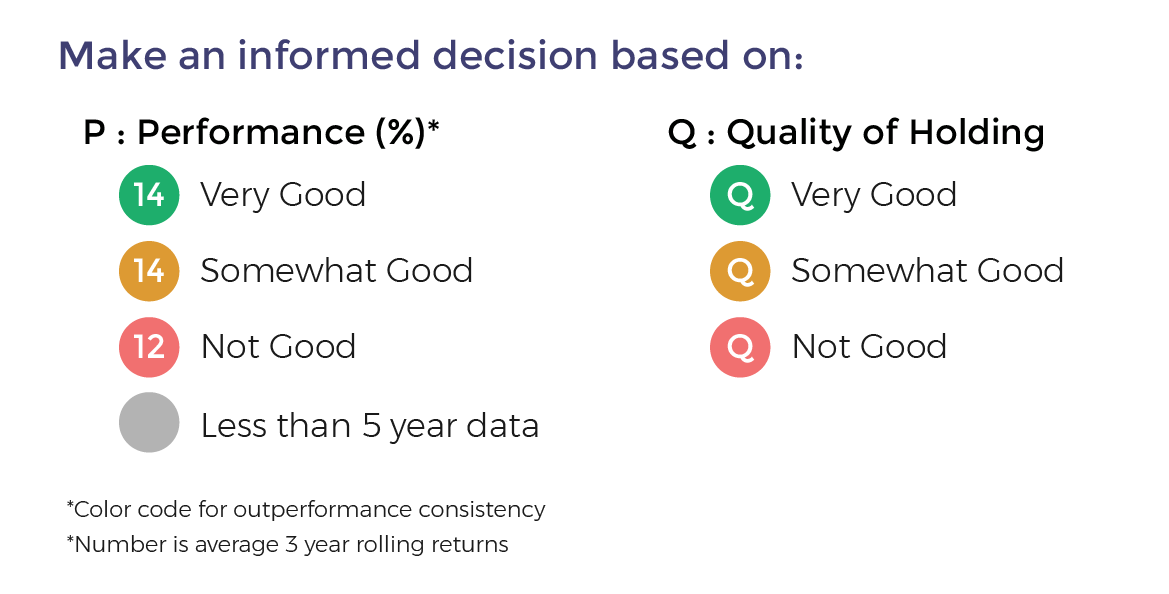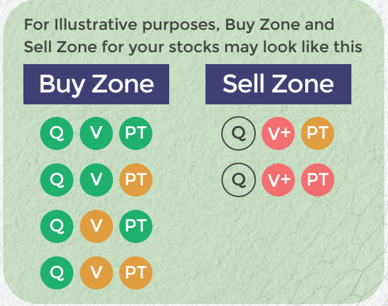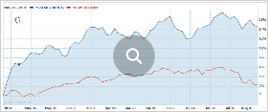GPT Healthcare
- GPT Healthcare is coming out with a 100% book building; initial public offering (IPO) of 2,83,42,673 shares of Rs 10 each in a price band Rs 177-186 per equity share.
- Not more than 50% of the issue will be allocated to Qualified Institutional Buyers (QIBs), including 5% to the mutual funds. Further, not less than 15% of the issue will be available for the non-institutional bidders and the remaining 35% for the retail investors.
- The issue will open for subscription on February 22, 2024 and will close on February 26, 2024.
- The shares will be listed on BSE as well as NSE.
- The face value of the share is Rs 10 and is priced 17.70 times of its face value on the lower side and 18.60 times on the higher side.
- Book running lead manager to the issue is JM Financial.
- Compliance Officer for the issue is Ankur Sharma.
Profile of the company
GPT Healthcare is one of the key regional corporate healthcare companies in Eastern India in terms of number of beds and hospitals as of Fiscal Year 2023. The company operate a chain of mid-sized full service hospitals under the brand and provide integrated healthcare services, with a focus on secondary and tertiary care. As of September 30, 2023, the company operates four multispecialty hospitals in Dum Dum, Salt Lake and Howrah in West Bengal and Agartala in Tripura with a total capacity of 561 beds. It offers a comprehensive range of healthcare services across over 35 specialties and super specialties, including internal medicine and diabetology, nephrology (including renal transplants), laparoscopic and general surgery, gynaecology and obstetrics, critical care, gastroenterology, orthopaedics and joint replacements, interventional cardiology, neurology, neurosurgery, paediatrics, and neonatology. Each of its hospitals also provides integrated diagnostic services and pharmacies that cater to its patients.
The company strategically focuses on the relatively under-penetrated healthcare market in Eastern India where it has presence in three cities which has provided it an understanding of regional nuances, patient culture and the mindset of medical professionals and where there is under-penetration of quality and affordable healthcare services. This has enabled its revenue from operations (ex-COVID) to grow at a CAGR of 53.87% over Fiscal Year 2021 to Fiscal Year 2023 and ROCE being 26.09% for Fiscal Year 2023.
Under the guidance of Om Tantia, Managing Director and one of its Promoters, the first hospital in the company’s network was established in Salt Lake, Kolkata (West Bengal) in the year 2000 with a capacity of eight beds, which has grown to 85 beds, including 17 beds across various ICUs and HDUs as of September 30, 2023. Its second hospital was set up in Agartala (Tripura) in the year 2011 and has a capacity of 205 beds as of September 30, 2023, including 66 beds across various ICUs and HDUs. The company’s hospital in Dum Dum, Kolkata (West Bengal), established in the year 2013, has 155 beds, including 53 beds across various ICUs and HDUs as of September 30, 2023. It is authorized to perform renal transplants. The hospital in Howrah (West Bengal) was commissioned in the year 2019, with 116 beds including 43 beds across ICUs and HDUs as of September 30, 2023. It endeavours to provide quality and affordable healthcare services to all its patients, and it has 1,902 employees, 91 full-time consultants, and 481 visiting consultants as of September 30, 2023. The company wholly own and manage each of its hospitals through a separate professional management team. Each of its hospitals is managed by a Chief Operating Officer, who is responsible for supervising day to day functioning. This structure provides it with greater control over its hospitals and helps it to deliver quality healthcare services.
Proceed is being used for:
- Repayment or prepayment, in full or in part, of all or a portion of certain outstanding borrowings availed by the company from banks and financial institutions.
- General corporate purposes.
Industry overview
Healthcare market consists of hospitals, diagnostic centres, domestic pharmaceuticals and medical devices. CRISIL MI&A Research estimates show hospitals account for a major share of the healthcare pie (62%), followed by domestic pharmaceuticals (20%), medical devices market (9%) and diagnostics (9%) as of fiscal 2023. Primary care facilities are outpatient units that offer basic, point-of-contact medical and preventive healthcare services, where patients come for routine health screenings and vaccinations. These do not have intensive care units (ICU) or operation theatres. Primary care centres also act as feeders for secondary care/ tertiary hospitals, where patients are referred to for treatment of chronic/ serious ailments. Secondary care facilities diagnose and treat ailments that cannot be treated in primary care facilities. These act as the second point of contact in the healthcare system. There are two types of secondary care hospitals - general and specialty care. Tertiary care hospitals provide advanced healthcare services, usually on referral from primary or secondary medical care providers.
The primary revenue streams of hospitals are the In-patient department (IPD) and out-patient department (OPD) segments. Typically, in most hospitals, the OPD contributes to more than three-fourths of total volumes; whereas the IPD accounts for as much as 71% of the overall revenue as of FY23. This ratio could vary with hospitals, depending on the type of services rendered and the ailment mix. Similar to these estimates, GPT Healthcare Limited derives 81.2% of their revenues from IPD while OPD accounts for 17.4% of their revenues for FY23. Other income constitutes 1.4%. Meanwhile, Surgeries and diagnostics account for the bulk of IPD revenue for most hospitals; however, the share of these verticals vary across hospitals, based on the pricing strategies deployed and specialities offered. However, surgical patients generate more revenue as opposed to medical patients. Hospitals used to enjoy high margins on the consumables used. However, after the government has capped the prices of stents and knee implants, they have rationalised their treatment costs by charging for the services rendered. Some hospitals have in-house facilities such as diagnostic centres and pharmacies, while others outsource these services.
Medical value travel, which is also referred to as ‘medical tourism’, has gained momentum over the years and India is fast emerging as a major tourist destination, owing to the relatively low cost of surgery and critical care, along with the presence of technologically advanced hospitals with specialized doctors and facilities, such as e-medical visa. India benefits from medical value travel stemming from neighbouring countries such as Bangladesh, Nepal and Bhutan. Eastern India is geographically well positioned for medical value travel from Bangladesh, Nepal and Bhutan, from patients who prefer to obtain quality healthcare services in India. Neighbouring countries (like Bangladesh - which sees the highest footfall of medical tourists to India and some parts of Nepal and Bhutan) come to India as they don’t have quality care in their countries. Eastern India is also a more accessible region for these neighbouring countries. Medical tourism is not just driven by cheaper prices. Kolkata and Northeast cities such as Agartala in Tripura are well placed to capture volumes from adjoining markets such as Bangladesh, also given cultural similarities which is a key driver for Kolkata attracting medical tourists from Bangladesh.
Pros and strengths
Right-sized, full service and strategically located hospitals leading to high return on capital: The company right-size its hospitals according to the needs of each sub-region in which it operates. For example, it has entered into long term leases for some of its hospitals, and it utilises land on long-term, low-cost terms to avoid high fixed rental costs, such as the land for its Salt Lake Hospital and Agartala Hospital, which it holds leases of 999 years and 99 years, respectively. Accordingly, it has been able to minimize lease expenses and lease renewal risks that would have otherwise -driven-up costs of its operations. Its hospitals are mid-sized, which enables it to incur lower capital expenditure per bed in comparison to other secondary care hospitals in India. It is also in the process of implementing this approach in its proposed hospital at Ranchi (Jharkhand), for which an MoU has been signed and a long-term lease agreement for 30 years (which is further extendable for a period of 20 years) has been entered into, at an estimated capital outlay of Rs 500 million.
Well diversified specialty mix and location mix: The company has an established presence in Eastern India, with multiple healthcare delivery verticals and serve multiple economic segments. The company’s operations encompass different levels of healthcare services from primary to tertiary and position it to be a one-stop destination for patient needs in the respective micro markets. It offers a comprehensive range of healthcare services across over 35 specialties and super specialties, including internal medicine and diabetology, nephrology (including renal transplants), laparoscopic and general surgery, gynaecology and obstetrics, critical care, gastroenterology, orthopaedics and joint replacements, interventional cardiology, neurology, neurosurgery, paediatrics and neonatology. Additionally, it is associated with various consultant doctors in connection with its specialty service areas, to ensure a diversified pool of resources and holistic expertise. As its healthcare network serves a diverse range of patient needs, this ecosystem of specialized doctors has enabled it to expand its reach and leverage market opportunities to gain access to a larger patient base and achieve synergies across verticals, while avoiding dependence on a limited pool of doctors.
Ability to attract, train and retain quality medical professionals: The company maintains its standard of quality healthcare services by consistently employing and engaging a diverse pool of talented doctors, nurses and paramedical professionals. Its multi-disciplinary approach, combined with its high-volume tertiary care model, and its focus on teaching and research, has helped it to attract and retain talented doctors and other healthcare professionals. As of September 30, 2023, it was associated with 91 full time consultants, 481 visiting consultants, and 740 nurses. Many of its specialists, physicians and surgeons are faculties and attendees at some of the conferences across the world. Its brand, long-standing presence in Eastern India, investment in medical technology and equipment, expansion in the region and reputation have helped it to attract and retain well-known doctors, and other health care professionals from a diverse talent pool for its facilities, which in turn draws a subsequent number of patients to its facilities.
Investment in infrastructure, processes and clinical excellence driving affordability: The company endeavours to deliver clinical value products through healthcare services, supported by a combination of quality medical talent, clinical and patient safety protocols, and investments in new medical technology. It provides treatment for complex and chronic diseases covering secondary and tertiary healthcare. In addition to providing core medical, surgical, and emergency services, it provides complex and advanced healthcare in various specialties, such as nephrology (including renal transplants), diabetology etc. For instance, it has installed cutting-edge robotic surgical technology in its Salt Lake Hospital and have performed over 200 robotic surgeries in a span of one year since the installation of the robotic surgical technology at its Salt Lake Hospital. The deployment of this technology has led to enhanced productivity and quality of care in gastroenterological and urological surgeries in its Salt Lake hospital. With a focus on neurology at its Dum Dum Hospital, it has set up a new renal transplant unit, and 3D imaging to enable interventional neurology cases.
Risks and concerns
Maximum revenue comes from certain specialties: The company’s top 10 specialties namely, internal medicine and diabetology, nephrology (including renal transplants), laparoscopic and general surgery, gynaecology and obstetrics, critical care, gastroenterology, orthopaedics and joint replacements, interventional cardiology, neurosciences, paediatrics and neonatology (Specialty Departments) account for a significant portion of its revenue. The company garner revenue of Rs 3,248.25 million (89.97%), Rs 2,930.11 million (86.84%) and Rs 2,009.75 milliion (82.79%) in FY23, FY22 and FY21, respectively from operations of its specialty departments. Any material impact on its revenues from such specialties, including by reason of reduction in patient footfall, reputational harm, liabilities on account of medical negligence or natural calamities and increased competition, could have a material adverse effect on its business, financial condition, results of operations and cash flows.
Geographical constrain: A significant percentage of its patients, as elaborated in the table hereunder, were served by three of its four hospitals i.e., Salt Lake Hospital, Dum Dum Hospital and Howrah Hospital each of which are located in West Bengal. Its fourth hospital is located in Agartala, Tripura. These three hospitals situated in West Bengal have contributed significantly to its revenue from operations due to the ability to provide specialised procedures and services, given their location and presence in the state of West Bengal. Any loss or reduction of its revenue from operations of its hospitals situated in West Bengal, including by reason of reduction in patient footfall, reputational harm, liabilities on account of medical negligence or natural calamities and increased competition, could have a material adverse effect on its business, financial condition, results of operations and cash flows and prospects. Moreover, each of its hospitals is located in the eastern region of India. Such regional concentration exposes it to adverse economic or political conditions that may affect demand for healthcare services in the region. Any changes in the policies of the state or local governments, political unrest, disruption, disturbance or downturn in the economy of West Bengal could adversely affect its business, financial condition, results of operations, cash flows and prospects.
Majority of doctors engage on a consultancy basis: The company’s operations depend on the efforts, ability and experience of its healthcare professionals, including its doctors, nurses, consultants and other medical staff at its hospitals. A majority of doctors are not its employees. Some of doctors do not work exclusively with the company and are permitted to engage in private practice outside of its hospitals and to work at hospitals that compete with the company. As its doctors are engaged on a consultancy basis, there is no assurance that they will continue to provide services to it or devote the whole of their time to its hospitals. The company may, as a result, be unable to effectively utilize their time and expertise in providing services to its patients. These arrangements may also give rise to conflicts of interest, including with regard to how these doctors allocate their time and other resources between its hospitals and other clinics or hospitals at which they work and where doctors refer patients. Such conflicts may prevent it from providing a high quality of service at its hospitals and adversely affect the level of its patient intake which may have an impact on business, financial condition, results of operations, cash flows and prospects.
Lack of health insurance in India may adversely affect its business: Health insurance coverage has increased from 17% in Fiscal Year 2012 to 38% in Fiscal Year 2022. As per the Insurance and Regulatory Development Authority (IRDA), more than 520 million people have health insurance coverage in India (in Fiscal Year 2022) as against 288 million (in Fiscal Year 2015) but despite this robust growth, the penetration in India stood at 38%. Under most indemnity plans under health insurance policies in India, insurance companies negotiate special package rates with a number of hospitals for various common procedures, for which the insured can receive without incurring any out-of-pocket payment. The insured is responsible for paying out-of-pocket expenses to the healthcare providers first and then filing a claim to get reimbursed for any treatments received outside the network. Most health insurance policies in India cover only inpatient care costs. Consequently, higher out-of-pocket expenses related to healthcare in India may make healthcare unaffordable for lower income households. Due to the lack of viable health insurance policies in India, demand for its medical services may not increase as expected. Additionally, lack of penetration of health insurance in India, may adversely affect its trade receivables if more patients pay out-of-pocket or require it to extend them credit terms. As a result, its business, financial condition, results of operations, cash flows and prospects could be materially and adversely affected.
Outlook
GPT Healthcare operates a chain of mid-sized, multi-specialty, full-service hospitals in Eastern India under the ILS Hospitals brand, providing integrated healthcare services focusing on secondary and tertiary care. Based in Kolkata, West Bengal, the company offers a range of healthcare services in over 35 specialties and super-specialties, including internal medicine and diabetology, nephrology (including kidney transplant), laparoscopic and general surgery, gynaecology and obstetrics, intensive care, gastroenterology, orthopaedics and joint replacement, interventional cardiology, neurology, neurosurgery, paediatrics, and neonatology. It also offers integrated diagnostic services and pharmacies. On the concern side, the company derives around 70% of its revenue from operations from its hospitals situated in West Bengal as these serve a significant percentage of its patients. Further, all its hospitals are located in the eastern region of India. Any impact on the revenue from these hospitals or any change in the economic or political conditions of West Bengal could materially affect its business, financial condition, results of operations and cash flows. Moreover, the Bed Occupancy Rate of the company is lower than some of its listed peers. If it is unable to maintain bed occupancy rates at sufficient levels, it may not be able to generate adequate returns on its capital expenditure, which could materially and adversely affect its operating efficiencies and its profitability.
The company is coming out with an IPO of 2,83,42,673 equity shares of face value of Rs 10 each. The issue has been offered in a price band of Rs 177-186 per equity share. The aggregate size of the offer is around Rs 501.66 crore to Rs 527.14 crore based on lower and upper price band respectively. On performance front, the company’s revenue from operations increased by Rs 236.22 million, or 7% from Rs 3,374.15 million in Fiscal Year 2022 to Rs 3,610.37 million in Fiscal Year 2023. Moreover, the company’s profit for the year decreased 6.37%, from Rs 416.63 million in Fiscal Year 2022 to Rs 390.08 million in Fiscal Year 2023.
The company intends to strengthen its existing hospitals by further balancing its specialty mix, deepening its expertise in select specialties and adding new specialties and services. The company’s expansion plans are generally driven by its existing facilities functioning at close to maximum capacity, as the new or expanded facilities will have a ready patient base, resulting in quicker operational ramp-up and higher business volume with lower operational risks. It intends to focus on building capabilities for new, more advanced specialties which have high demand in the respective micro markets and deliver a higher ARPOB. The company has identified urology, neurology, interventional cardiology and oncology as specialties that it intends to further strengthen and grow. Going forward, the company intends to upgrade its medical equipment like MRI and CT scan. The company also intends to purchase equipment like neurosurgical microscope and arthroscope sets, which are expected to contribute significantly towards the range and quality of services it is able to provide.































